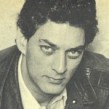Sunny’s Nights: Lost and Found at a Bar on the Edge of the World is the story of the remarkable Sunny Balzano and the haven he provided to a group of misfits in a neighborhood that the rest of New York City left behind.
When did you decide to write the book and what motivated you to do it?
I didn’t consciously plan this book out, but I did consciously commit to memory and commit to paper countless exchanges we had or that I witnessed, knowing that I was the only person who was likely to chronicle Sunny’s life to this degree. It’s an undertaking that took me two decades—he is my L.B.J.—and I can honestly say that I think it’s a portrait with depth. Sunny is one of these people so distinctive, so full of marvelous vitality, expressiveness, eloquence, that you’re immediately drawn to him. A customer once said, “Sunny is like a deck of cards—there are 52 sides to him.”
How did the book come about?
Dan Menaker, then the editor-in-chief of Random House, approached me eight years ago after seeing a short piece that I wrote for the New York Times. He gave me 10 months. It took me eight more years. Somehow Random House waited.
You chronicle Sunny’s life—blue- collar childhood in Red Hook, stint among the Cedar Tavern abstract expressionists, and years in an Indian ashram. Which of these would you most like to have experienced?
Although I don’t see myself as taking part in dynamic meditation and wearing tunics at an ashram, Sunny spoke of enchanting experiences he had in India in the early 1970s. He often traveled alone by train through the countryside with no real itinerary. When the trains pulled into stations, you would lean out the window and buy a cup of tea served in a small clay cup. You drank the tea and as the train gathered speed, you’d lean out the window and smash the cup on the ground below. The shards were gathered by the vendors, softened and reclaimed to make more cups. I would have liked to do this.
You examine the changes that have swept Brooklyn over the last 15 years. What are your feelings about this vast transformation?
My editor asked me at one point whether I want to address gentrification more explicitly (and I do get around to it towards the end in a way that I hope is poetic, not pedantic). I demurred by saying, “Who am I? I’m a bartender.” I have no special insight. It’s the nature of the city to be in constant transformation. This is not my nature, however, and I try not to look when passing today’s newest construction project. The book is a portrait of a bar—and a neighborhood—that exists more in memory than in the physical world. Sunny’s was such an extension of Sunny, the man, that it couldn’t exist in today’s city. It’s a place a little unfamiliar, a little forgotten.








